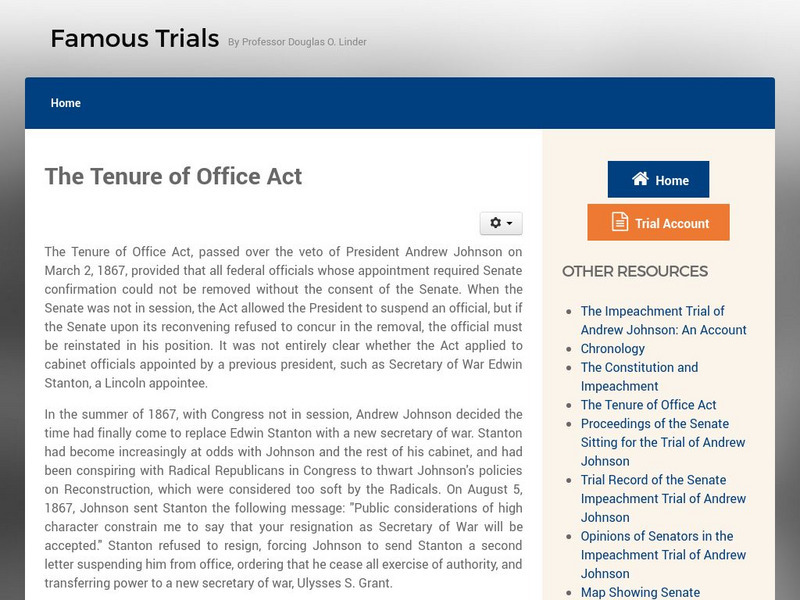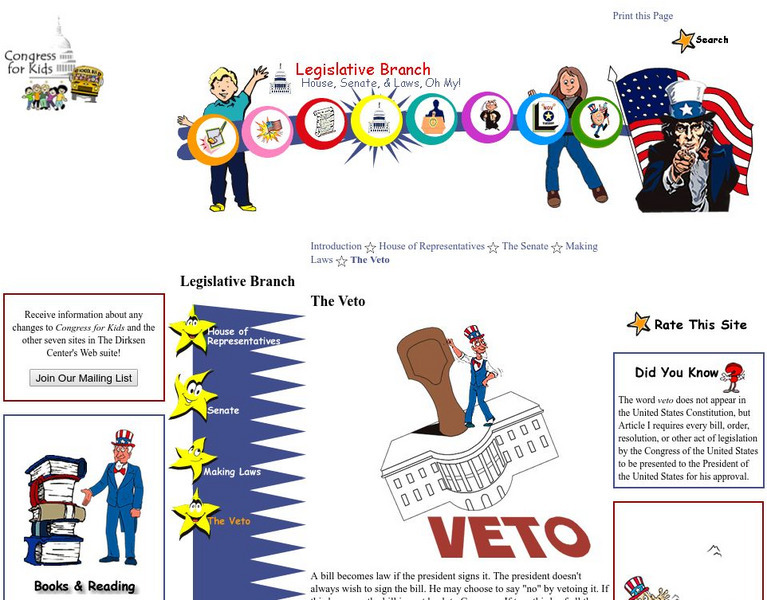Curated OER
How an Idea Becomes a Law
Young scholars create posters that demonstrate the step-by-step process of how ideas become laws. They list the fourteen steps of a bill becoming a law, describe a presidential veto, and define override.
Other
President Gerald Ford's Veto of Railroad Retirement
Text of the message that President Ford wrote to the House of Representatives in 1974 stating his reasons for his veto of the Railroad Retirement Benefits Legislation.
Teaching American History
Teaching American History: Speech on Veto of the Mc Carran Internal Security Act
Read this impassioned speech given by President Harry S. Truman in which he gave his justification for vetoing the McCarran Internal Security Act, claiming that it would help Communists rather than root them out, as the act intended.
University of Pennsylvania
The American 50s: Mc Carran Act or Internal Security Act of 1950
Although brief, this article explains the McCarran Act and how it intertwined with the House Un-American Activities Committee in its anti-Communist hysteria.
University of Missouri
Famous Trials: The Tenure of Office Act 1867
A description of the Tenure of Office Act and why it caused problems for Andrew Johnson, leading to his impeachment. From part of a larger site filled with primary source information about Johnson's trial.
US Government Publishing Office
Ben's Guide to u.s. Government: President's Legislative Powers
An easy-to-understand discussion on the actual legislative powers of the president and the veto. Includes related links.
The Dirksen Congressional Center
Congress for Kids: The Legislative Branch: The Veto
Learn about the President's power to veto a bill, and understand how Congress responds when this happens.
University of Groningen
American History: Essays: The American Whig Party: Historical Background
A brief history of the American Whig Party, and changes to the government and democracy brought by Andrew Jackson's presidency.








